The '20s may be roaring today but not as much as they were 100 years ago in Abilene
- Oops!Something went wrong.Please try again later.
The '20s certainly were roaring Tuesday.
And that was beside everyone buzzing about the leaked Supreme Court draft on Roe v. Wade and who was getting how much and when in Abilene Gives.
The Paramount Theatre, which opened this very month in 1930, was the perfect setting for lifelong history major Jay Moore's talk about the original Roaring Twenties and surviving the 1930s in Abilene.
A full house of folks attended, perhaps having their fill of the '20s 100 years later.
Yet, the group found similarities.
For example, parking downtown still confounds us. We have more options on how to park than any other city in America, Moore quipped - his first remark of the evening that drew knowing laughter and nods.
There was precedent for wearing a face mask to protect public health.
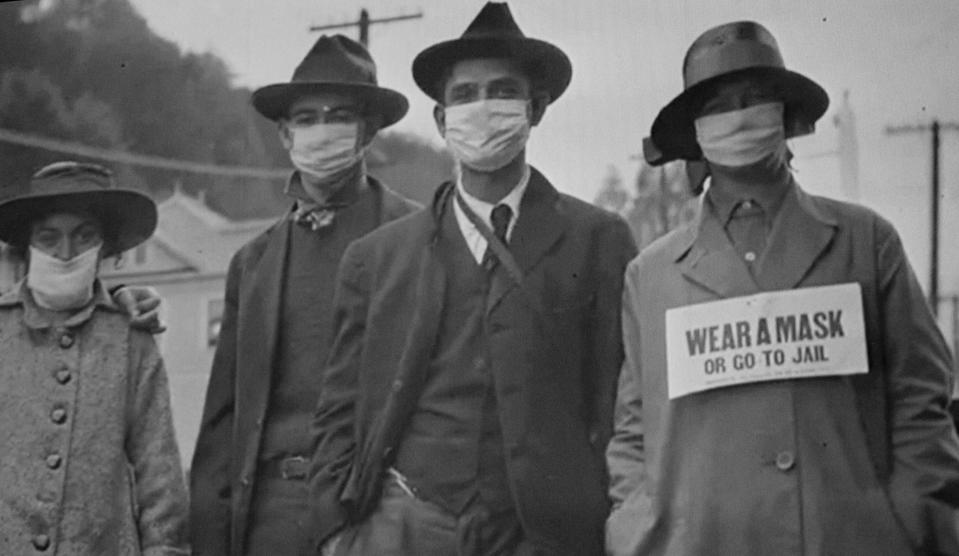
And today, we know a bully or two in Congress, like we had way when when in U.S. Rep. Robert Blanton.
Rebel-rouser Robert
Moore's 90-minute presentation in length rivaled one of Blanton's blusters on the House floor, but was far safer. If Blanton didn't agree with you or like you, resolution could be his challenge to a fight. And, sometimes, challenges were carried out.
He was an enemy of labor union leader Samuel Gompers, and Blanton once blamed labor when his vehicle was fired upon near Washington, D.C.
Blanton was elected to Congress in 1916 and served until defeated in 1936, minus one year he sought a Senate seat and did not seek re-election.
Moore playfully wove tales about Blanton, who was censured by but not expelled from Congress, into his narrative. However, he left comparisons to modern-day political bullies at the nation's capital to the imagination of his audience.
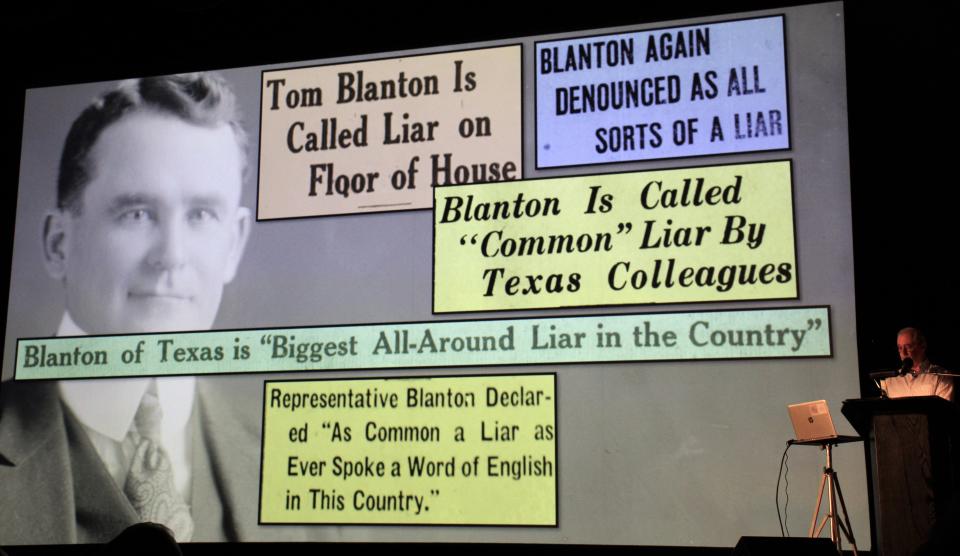
Brave boys, go-getter girls
Moore also weaved the story of a trio of tree-sitters into his talk.
That was all the rage, and brought smiles from those who remember when boys would be boys. The winner was Thurman Cline, who stayed aloft the longest, more than 300 hours. Alas, a fierce storm drove the young heroes to the the ground.
Girls sometimes were not girls. Moore told about a young girl named Olivia Eastus, whose first public adventure was dashing from the crowd at Abilene's airport to sit in the seat of the Spirit of St. Louis left unoccupied by none other than Charles Lindbergh.
She would continue her willful ways throughout her life.
And there there young women attending brand-new McMurry College, who had the audacity to dress in pants for a photo. That almost was as bad as playing baseball on a Sunday.
As for contrasts, Moore showed an image of a telephone and phone book, perhaps a shock to the cellphone generation. Remember when phone cords got tangled, and you had to dangle the receiver and let it spin to freedom? Many in the audience did.
The '20s, Moore said, perhaps represented the greatest decade of progress in Abilene's history going back to 1881. Tall buildings were built, Abilene Christian College relocated to the Hill (which is only a slight rise in elevation, but dramatic enough) and the fall fair launched at Fair Park, that would be home to a zoo.
One of the first donated residents, the local newspaper reported, was a "fierce squirrel."
Moore noted the movers and shakers of the city, but said those who were Baptist had to be careful about shaking too much. But the opening of a hospital, an effort by prominent Baptists, was a moving experience.
The city of Abilene built a lake south of Buffalo Gap. And while fishing was not allowed due to concerns of anglers with tuberculosis spitting on bait, it was advertised as a great place to build a summer home.
As of yet, Moore quipped again, none have been constructed.
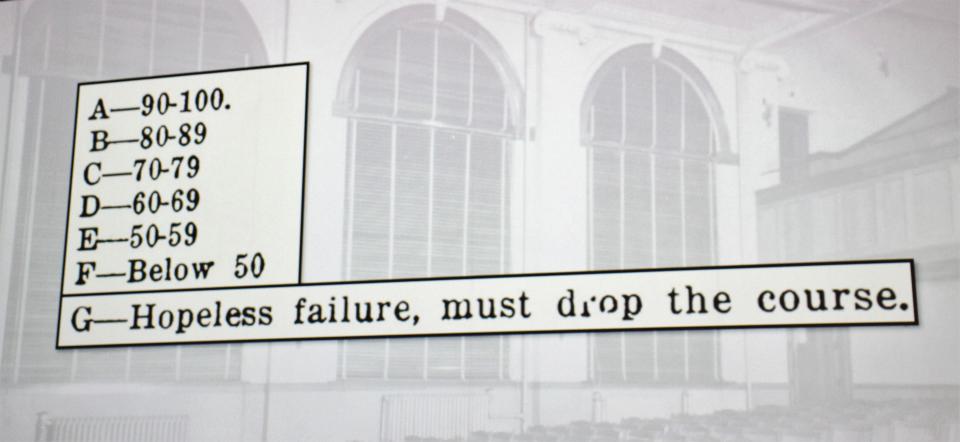
Did you remember that KRBC radio station first broadcast from atop the Windsor, which first was a Hilton? The Hilton opened in 1927, the Hotel Wooten coming next and becoming the city's tallest building at 16 stories.
Moore showed photos of downtown department stores, such as Minter's, Grissom's and Waldrop's, and what occupies those spaces today.
And it was during this era, that train tracks were elevated when two underpasses were built. Also built was a pedestrian tunnel crossing from Abilene High on South First to North First. Convenience also came with crime, and it was suggested that a police officer be stationed there to protect pedestrians.
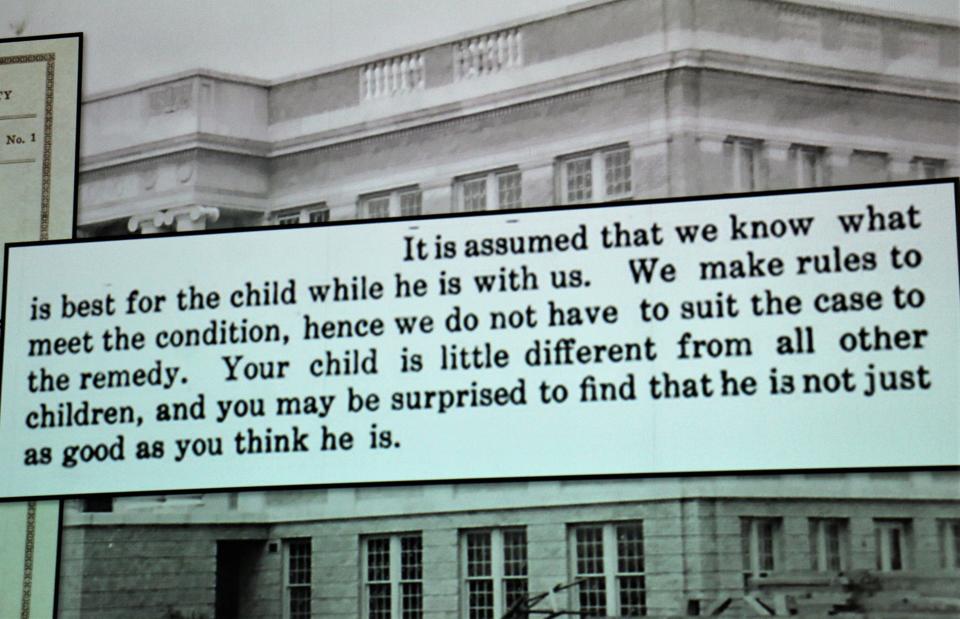
The new school once had a lily pond, which proved to be the perfect place for pranks. Due to an early move-in, the first senior class, in 1924, studied at the new school for only four weeks.
Perhaps the most startling story was the robbery of $35 from a Piggly Wiggly grocery store on Butternut Street. The bandit got a way but 18 months later, was shot to death in Louisiana.
The robber? None other than Clyde Barrow.
As for the '30s, Abilene's population grew by about 3,000 after more than doubling during the '20s. Some landmarks that remain today were built as work projects during The Depression, including facilities at Abilene State Park.
Built in the 1930s, too, was the federal building downtown on Pine Street.
Hardest hit were local banks, though Farmers and Merchants survived and is First Financial today.
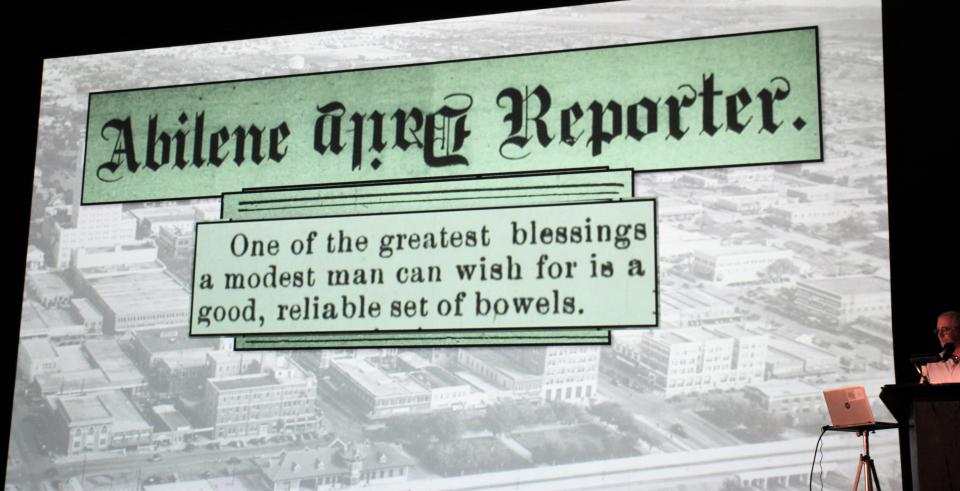
The "round building" at now Rose Park was built, as a show barn. It later offered theater and today serves gloriously as a storage site.
Sometimes, Moore noted, progress gives way to going backward.
By 1930, Abilene, with a new airport, was served by three airlines.
"Two more than we have now," Moore quipped, to laughter.
And, you could fly west, inside of going east first.
However, the flight to Los Angeles would consume 12.5 hours.
Blanton? In his 80s, he considered another bid for Congress against Omar Burleson. But, Moore said, Blanton's wife did not want to go back to Washington, so he bowed out.
Eastus? She would serve as receptionist for Trygve Lie, the first secretary general of the United Nations, and later move to Hollywood.
Either direction, a long way from 1017 Peach St. in Abilene, Texas.
Greg Jaklewicz is editor of the Abilene Reporter-News and general columnist. If you appreciate locally driven news, you can support local journalists with a digital subscription to ReporterNews.com.
This article originally appeared on Abilene Reporter-News: The '20s may be roaring today but not as much as 100 years ago

